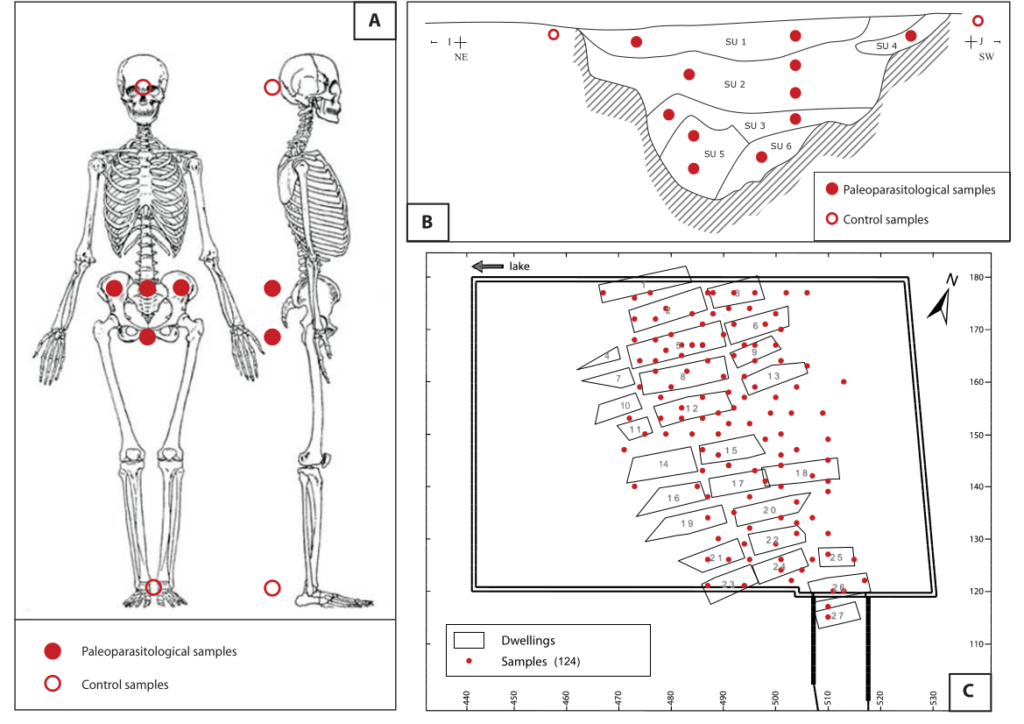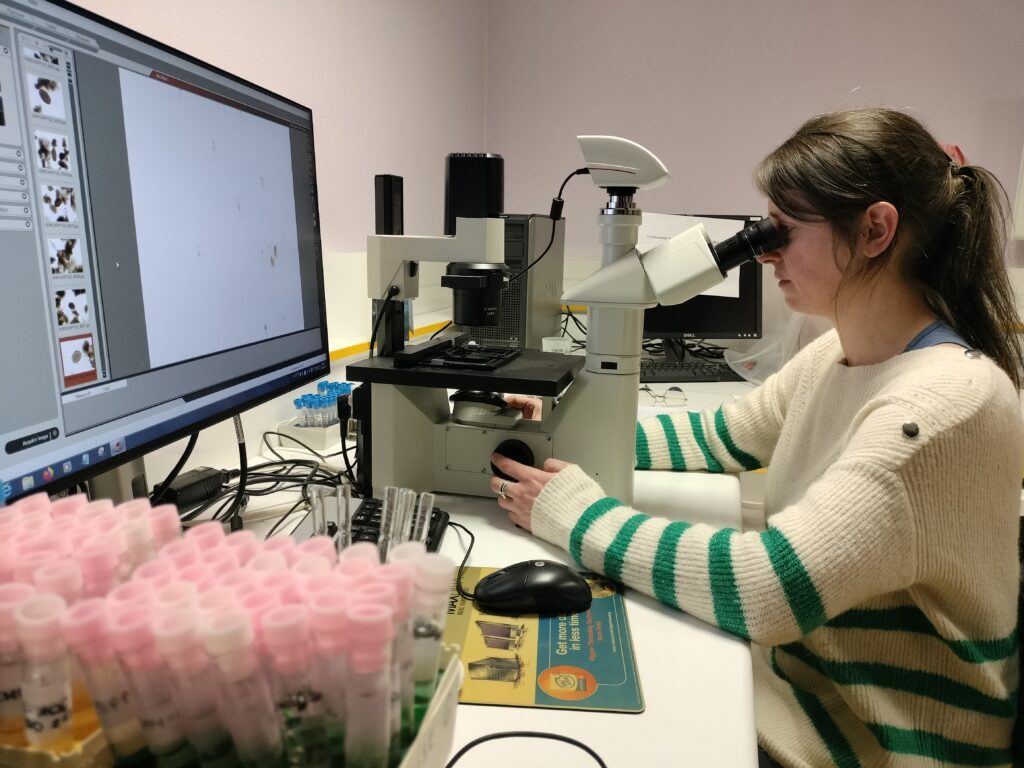
Tracing Ancient Parasites to Understand the Past: Parasitology Research at the RGK
by Sina-Marie Hahn

Dr. Céline Maicher, associate researcher at the Chrono-environnement Laboratory in Besançon, France, is one of three grant holders of the 2025 research fellowships awarded by the Romano-Germanic Commission (RGK) of the German Archaeological Institute (DAI). Her work incudes library research at the RGK and laboratory research as well as sample evaluation in France, which is why she moved between Frankfurt and Besançon during her three-month stay from 1st September to 30th November 2025. She focuses on paleoparasitology, the study of ancient parasites preserved in archaeological contexts. This emerging discipline sits at the crossroads of archaeology, biology and paleopathology and provides valuable insights into past human hygiene, dietary practices, waste management and the interactions between humans, animals and their environment.
Paleoparasitology uses microscopic and molecular methods to detect parasite eggs or DNA in sediments, burials and ancient latrines, making it possible to reconstruct past hygiene, diet and human-environment relations. Depending on the context, samples are systematically collected from specific body areas or archaeological layers and processed using protocols like remote health monitoring (RHM) to isolate parasite remains.

Paleoparasitology deepens archaeologcial understanding by revealing how past communities lived, adapted and managed their environments. During her fellowship, Céline Maicher applies this interdisciplinary approach to the Cucuteni-Trypillia culture in Eastern Europe, focusing on the proto-urban site of Stolniceni in Moldova, which has been part of an RGK research project since 2016. Through the analysis of sediment samples from domestic pits and household areas, she investigates waste management, livestock keeping and daily health conditions within these early settlements. Her study examines whether differences in diet or parasite presence reflect distinct social practices and explores if the density and scale of these Neolithic “mega-sites“ already produced parasite transmission patterns comparable to those of later urban environments, providing valuable insights into early urban living and human-environment interactions.


The exchange with the RGK team working on Stolniceni in particular and soil and sediment archives in general (Jessica Schmauderer, Thomas Birndorfer, Lukas Werther) about the history, context, excavation and surveying methods has provided her with important insights.
This partnership reflects the RGK’s commitment to interdisciplinary and international research in European prehistoric archaeology.


Céline Maicher’s research highlights how studying ancient parasites deepens our understanding of human health, environment and behaviour. Since parasite transmission depends on climate and human activity, paleoparasitology provides valuable insights into modern issues such as epidemiology, sustainability and environmental health. By analyzing how past societies managed waste, food and water, Maicher reveals parallels with todays’s global challenges. Her work shows that microscopic traces from the past can illuminate how human decisions and environmental change have shaped disease patterns across time, linking ancient behaviours to contemporary public health concerns.
Looking forward, Maicher plans to publish her findings and expand her research on the Cucuteni-Trypillia sites, further strengthening the role of paleoparasitology within archaeological science.
More information about Dr. Céline Maicher and her activities can be found on Research Gate and the SOPAST-project of the Chrono-environnement website.
